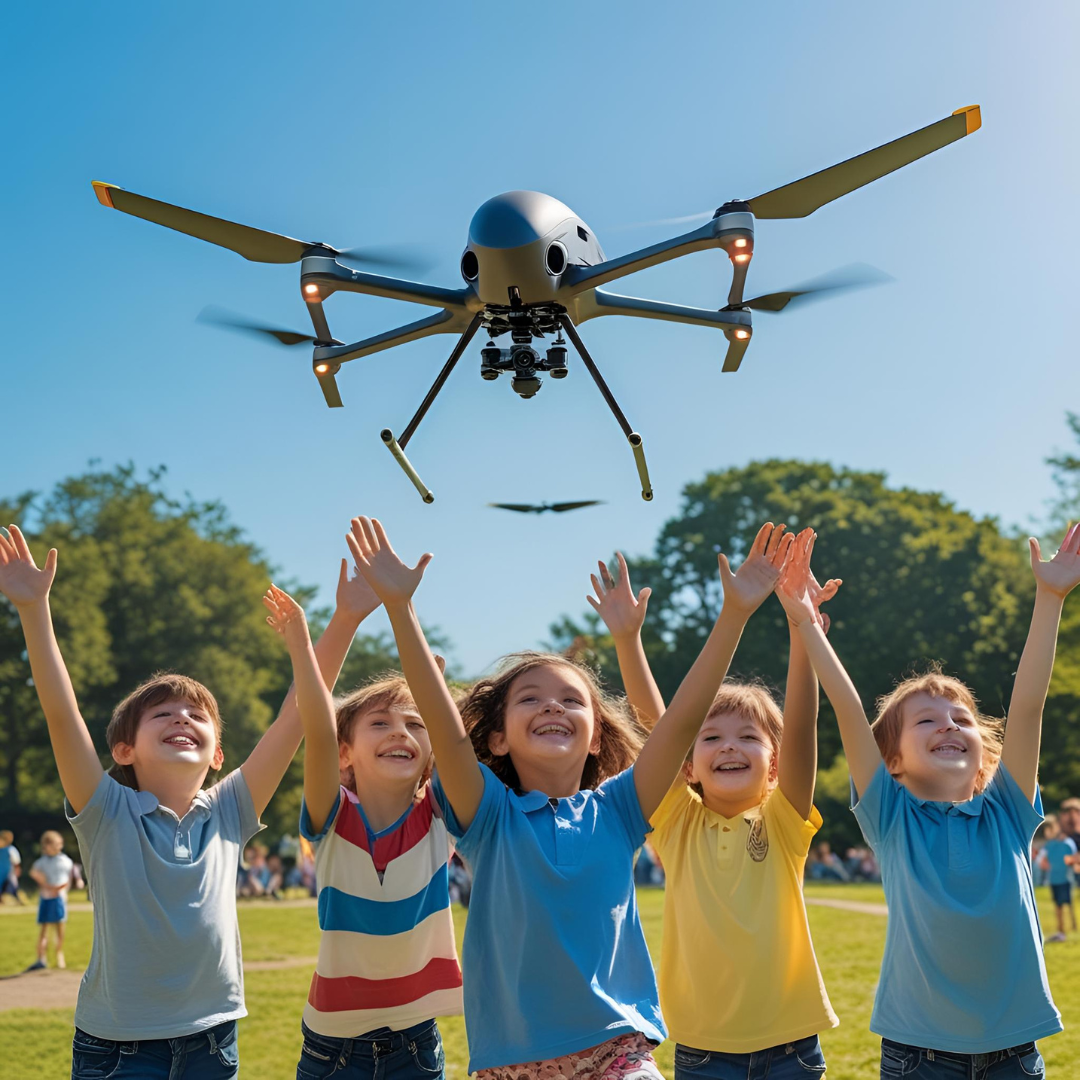DRONE SAFETY GUIDELINES
Essential safety procedures and best practices for drone operators in Philippine airspace. Follow these guidelines to ensure safe and responsible drone operations.

Restricted Areas of Operation
Critical altitude and proximity restrictions for safe drone operations
⚠️ PROHIBITED OPERATIONS
- •Above 400ft (120m) - Maximum altitude limit
- •Within 10km radius of any Airport Reference Point
- •Over populous areas such as schools, marketplaces, and crowded events
Note: These restrictions ensure safety of manned aircraft and people on the ground.

Prohibited Airspace
Restricted zones requiring special authorization from CAAP
🚫 STRICTLY PROHIBITED
No person may use an Unmanned Aircraft (UA) in controlled or Prohibited Airspace unless authorized by the Authority.
Authorization Required: Contact CAAP for special permits in these areas.

Safe Distance from People
Mandatory separation distances to protect vulnerable individuals
📏 MINIMUM 30 METERS DISTANCE
Under 18 years old - extra caution required
Senior citizens - may have mobility limitations
Expecting mothers - avoid stress and noise
Safety Tip: Always maintain greater distances in crowded areas and during events.

Visual Line of Sight (VLOS)
Maintain constant visual contact with your drone during flight
👁️ VISUAL LINE OF SIGHT REQUIREMENTS
What is VLOS?
The ability to see your drone with your own eyes (not through a screen) at all times during flight.
Requirements:
- • Drone must be visible without binoculars or devices
- • Must be able to determine drone's orientation
- • Must be able to see potential hazards
- • Maximum practical distance: ~500 meters
Prohibited: Flying beyond visual range (BVLOS) without special authorization.

Night Flying Restrictions
Daylight operations only unless specifically authorized
🌙 NIGHT FLYING RULES
General Rule:
Night flying is PROHIBITED unless specifically authorized by CAAP.
Authorized Night Operations:
- • Emergency search and rescue operations
- • Law enforcement activities
- • Special commercial operations with permits
- • Government authorized missions
Safety Requirements for Authorized Night Ops:
- • Anti-collision lighting required
- • Enhanced pilot training
- • Additional safety equipment

Required Certificates
Essential documentation for legal drone operations in the Philippines
📋 MANDATORY CERTIFICATES
UA Controller Certificate
Required for: Commercial operations, drones >7kg
Validity: 2 years (renewable)
UA Certificate of Registration
Required for: ALL drones (recreational & commercial)
Validity: 3 years (renewable)
UIA Operators Certificate
Required for: Commercial drone service providers
Validity: 2 years (renewable)
Flight Permit
Required for: Specific flight operations in controlled airspace
Validity: Per flight or specified period
Important: Always carry these certificates during drone operations and present them when requested by authorities.
Important Notice
These guidelines are based on CAAP regulations and international best practices. Always refer to the latest CAAP circulars and local regulations for the most current requirements.